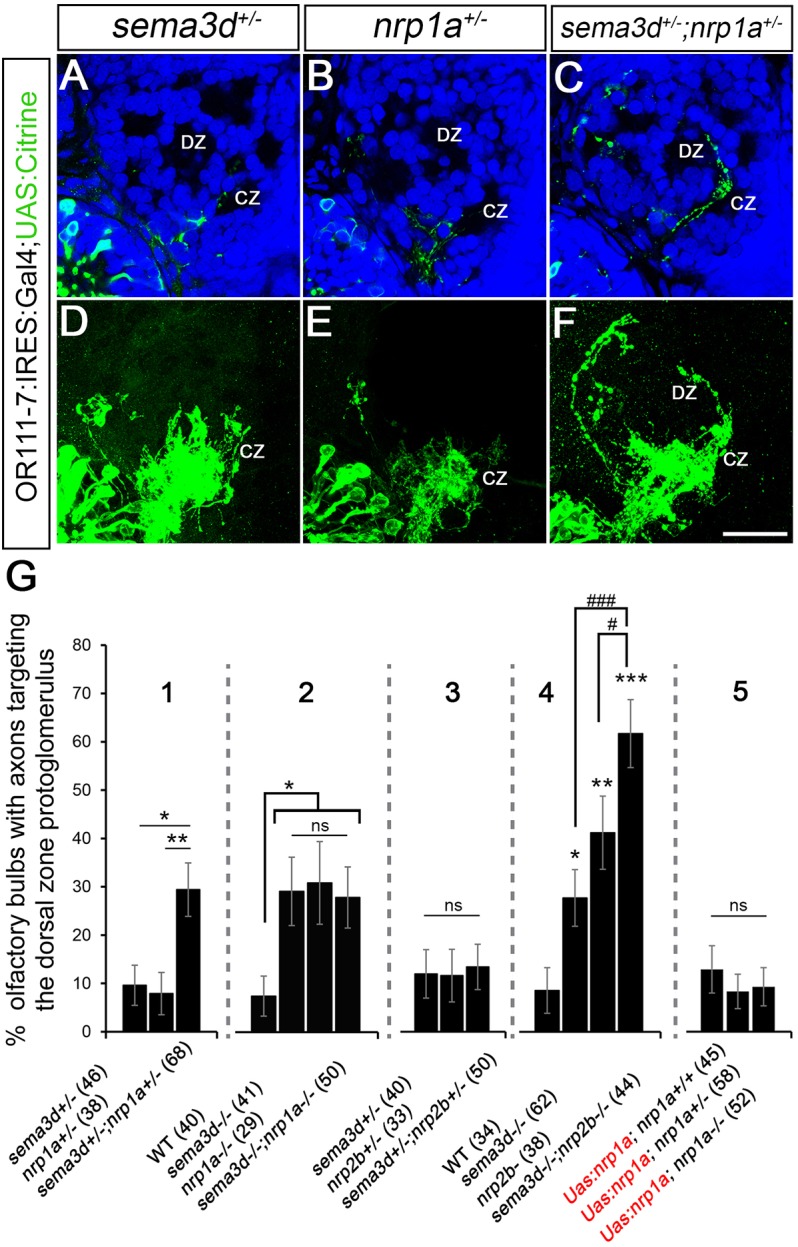Fig. 5.

sema3d interacts genetically with nrp1a to promote axon targeting of or111-7 transgene-labeled axons to the CZ. (A-C) Single optical sections through 72 hpf or111-7 transgenic larvae (frontal view). Axons are in green. Dorsal is up and medial is to the right. Propidium iodide (blue) labels cell bodies revealing protoglomeruli as cell-free regions. (D-F) Maximum intensity projections of serial optical sections from the larvae shown in A-C. Scale bar: 25 µm. (G) The percentage of OBs with projections to the DZ protoglomerulus. Statistical significance was estimated using two-tailed (P<0.05*, P<0.01**, P<0.001***) or one-tailed (#P<0.05, ###P<0.001) Fisher's exact tests. Error bars represent s.e. of the sample proportion. sema3d+/−;nrp1a+/− transheterozygotic larvae (C,F; 1 in G) have an increase in projections to the DZ compared with sema3d+/− heterozygotic (A,D) or nrp1a+/− heterozygotic (B,E) siblings. sema3d−/− mutants, nrp1a−/− mutants and sema3d−/−;nrp1a−/− double mutants have a similar increase in projections to the DZ as compared with wild-type siblings (2 in G). By contrast, sema3d+/−;nrp2b+/− transheterozygotes do not have an increase in projections to the DZ when compared with sema3d+/− heterozygotic or nrp2b+/− heterozygotic siblings (3 in G). sema3d−/−;nrp2b−/− double mutants have a greater frequency of projections to the DZ than sema3d−/− or nrp2b−/− siblings (4 in G). nrp1a−/− mutants expressing the UAS:nrp1a:UAS:citrine transgene do not have an increase in misprojections to the DZ or non-protoglomerular regions as compared with wild-type or heterozygotic siblings (5 in G). CZ, central zone; DZ, dorsal zone.
